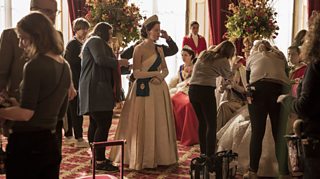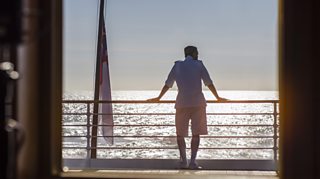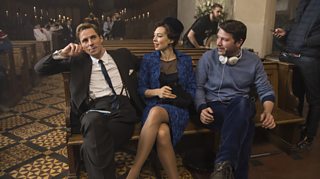
Claire Foy as the Queen is prepared for her next shot
Everything about The Crown is big and ambitious, from its 400 sets to its 32 awards. Then there’s its massive but secretive budget. Netflix hasn’t commented on speculation that it's £9.4 million an episode but writer Peter Morgan is reported to have suggested it’s more like half that. That's still pretty good going.
The Crown dramatises the story of the royal family in public and in private since the Queen and Prince Philip married in 1947. Preproduction is already under way for the third season, adding another ten hours to the twenty already released by Netflix. And a fourth season has already been agreed.

Not quite Buckingham Palace yet
At a Royal Television Society event in London, key members of the production team offered insights into what it’s like to create this monster production.
For editor Pia Di Ciaula “every episode is treated like a feature film”. She appreciates the relatively generous schedule and budget, especially when it means that if an early cut of the film feels lacking in a dramatic element, there’s provision for shooting for a couple of extra days. As she said: “I don’t want to work any other way now.”

Eastbourne, Cape Town or Elstree?
For visual effects supervisor Ben Turner, there were special challenges. To recreate the royal yacht Britannia, Ben organised a drone shoot around the ship, which is now retired in dock at Edinburgh. By integrating thousands of photographs he was able to bring the yacht to the screen. But even then, what became a single Britannia sequence had to be filmed in half a dozen locations: the sun deck on a cliff on the south coast of England; a corridor on a tug off Cape Town; some of it on sets in Elstree. And when an actor steps from one shot to another, it needs to look like the same time and place.
All those locations mean that the extras will be different people. But director Ben Caron said he’s pretty relaxed about that kind of thing: “I don’t really believe in continuity,” he said, to audience laughter, adding more seriously: “if the drama is compelling enough, I don’t think you’ll see continuity mistakes.”

The costume department's year-by-year fashion archive boards
Production designer Martin Childs faced a dilemma in the first episode: the Queen’s wedding was actually a relatively modest affair since the royal family didn’t want to appear profligate at a time of post-war austerity. But Martin was worried that viewers might think the low-key celebrations on screen were a sign that the production didn’t have the resources to represent the full pomp and spectacle of a royal story (though any concerns on that front will have been dispelled by the lavishness of set pieces in later episodes).
For Martin, a project like The Crown means having to pace yourself, to allow the look of the series to evolve. In reflecting Britain’s growing prosperity over the decades, Martin said, “you have to save some colours for later.”
On the question of how accurate the series is, for all the impressive work that went into the authenticity of the shots and the sounds, the production team agreed that it was the drama that counted more. As costume designer Jane Petrie put it “it’s not a documentary, you need to find the tone and the mood of it.”

Director Ben Caron shares a jokes with Princess Margaret (Vanessa Kirby) and Antony Armstrong-Jones (Matthew Goode)
I asked director Ben Caron to explain how the schedule is organised on a ten-part series with several directors each shooting more than one episode:
For editor Pia Di Ciaula, times when the production is on location are as busy as any. Working on episodes directed by Stephen Daldry, her job is to provide daily assemblies of the rushes for the cast and crew. She adds in visual effects using and sound effects ():
So what’s it like to work for Netflix as film-makers? According to Ben and Pia, it’s a very ‘light touch’ relationship:
If you want to hear more about Netflix’s commissioning policy, especially in relation to non-US producers, there are interesting insights from the company’s chief content officer Ted Sarandos .
Sarandos tells some of his own story to explain how Netflix grew from DVD distributor to its current world-spanning role. Host Marc Andreessen and Sarandos compare the cultures of Hollywood and Silicon Valley and discuss how Netflix makes them work together.
The good news for film-makers outside the US, according to Sarandos, is that Netflix's policy is to encourage productions to be as 'localised' as possible, believing that will make them most appealing to viewers around the world.
